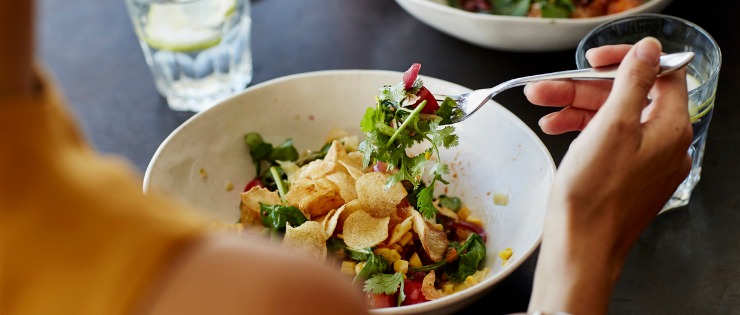
When money is tight, most people cut back on discretionary spending. Little luxuries like buying takeaway coffee and lunch don’t seem like much, but the cost adds up quickly. While it’s important we support small business and help Australians get back to work, making your lunch a few days a week can help balance a tight family budget.
Importantly, homemade lunches reduce the chance of making poor food choices. These not only contribute to unwanted kilos but also put you at higher risk of chronic disease. We all need a strong immune system right now, and wholesome home-prepared meals is an excellent way to give it a boost. A trial by Deakin University showed eating a high-quality diet can help treat major depression.
Make Lunch a Healthy Meal
While quick and easy lunch options are tempting when you’re busy juggling work and family commitments, they’re often not the most nutritious. According to Nutrition Australia, a healthy lunch includes:
Breads and cereals (wholegrain is best)
Fruits, vegetables and legumes (eat a rainbow of colours)
Dairy including milk, cheese, yoghurt (preferably low fat)
Think about the Australian Healthy Eating Pyramid when you’re adding other ingredients such as lean meat, poultry, fish, eggs, rice, quinoa and seeds. Remember, water is the best drink for lunch rather than a sugary juice or soft drink.
Get Organised
Much of the success of healthy lunches is being organised. In recent times, people have had to give more thought to what they will eat and how they’ll buy the food. We should use this recent habit to our advantage. Make a weekly or fortnightly meal plan that includes dinner as well as lunches. Prepare a shopping list so you can buy the ingredients and then prepare them when you get home.
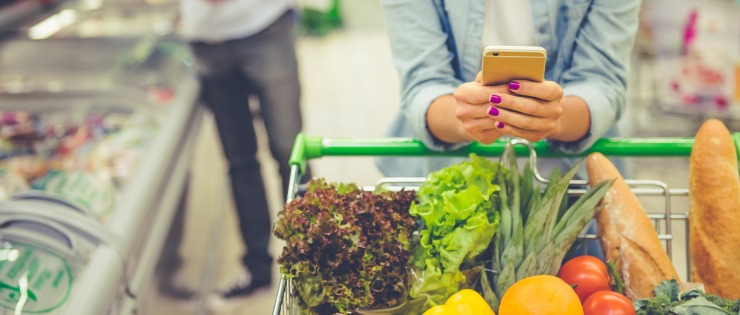
Make sure you have enough containers, lunch boxes and jars so you can prepare a few lunches in advance. Most meals only last up to two days in the fridge before they’re unsafe to eat. Remember to pack your lunch with an ice brick to keep foods cold while transporting, so you don’t give yourself food poisoning!
#1 Leftovers
There’s nothing quicker and easier than taking some leftovers from last night’s dinner. You might complain there are never any leftovers because you’re feeding two hungry teenagers. But the answer is to increase the quantity. It takes time and effort to prepare the family’s nightly meal, but with a little extra effort, you can double the recipe to make sure you have enough for lunches.
#2 Light Salads
If you prefer a light, cold lunch rather than a heated one, salads are a popular choice. A salad can take time to prepare, so if your mornings are rushed, it’s wise to make it the night before.
There are so many choices in salads. Alternate between fresh and roasted vegetables so you don’t get bored with the same salad day after day. A roasted salad can be warmed up in the cooler months and eaten cold in summer.
If you’re worried you will be hungry by mid-afternoon because lettuce leaves aren’t filling, include a lean, thinly sliced protein. Chicken and beef mixed in your salad are great appetite satisfiers. Adding nuts to your salad is a tasty, healthy option. A handful of cashews will provide iron and magnesium to help support your metabolism. Almonds are a good source of vitamin E, manganese and antioxidants to help protect us during stressful times.

Many salads are healthy until you add the dressing. If you’re watching your calorie intake, choose store bought dressings that are low in fat and sugar. For those who prefer to make their own, you can use a simple lemon juice and olive oil dressing on most salads, and a balsamic vinegar base is also a tasty option. For a textured dressing, include a grainy mustard. If your salad calls for a creamy dressing, choose Greek yoghurt over mayonnaise or cream.
#3 Mason Jars
Using a mason jar allows you to make up a couple of days' meals in advance without losing too much quality. By packing the ingredients in tight, there is little air in the container so the ingredients stay fresh and you can pack five jars for the full working week. Layer your jar with a mix of rice, raw and cooked vegetables, quinoa, seeds, nuts, zucchini noodles, shredded chicken and cheese. Just remember to place any dressings and the wettest ingredients at the bottom with the dry ones at the top.
#4 Quick Quiche
Eggs are a healthy protein so a quiche is always a winner for lunch. Keep it healthy by leaving off the pastry or make it a low fat version. You can choose to eat your quiche warm or cold depending on your mood or the weather. A tray of zucchini slices takes just minutes to whip up and you have a few days of lunches ready to go.
#5 Pre-Prepared Vegetables
You will be more likely to eat vegetable sticks if they are easy to grab and go during the mad morning rush. When you return from your weekly shopping trip, don’t put your fruit and vegetables straight in the fridge. Give them a good wash then chop carrots, celery and capsicum into sticks. Chop up some cauliflower florets and add a handful of cherry tomatoes with a low fat dip such as hummus and you have a nutritious lunch.
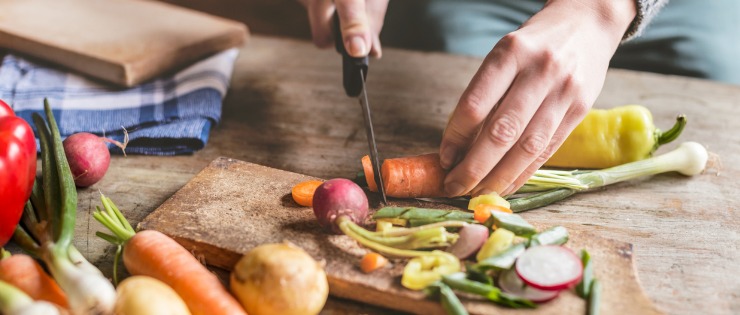
#6 Refreshing Fruit Salad
Once you’ve finished preparing your vegetable sticks, do the same with fruits like pineapple, orange and watermelon that can be messy and time consuming to chop when you’re in a rush. In the morning, spoon into a small container with some berries and you have a healthy fruit salad you can eat with a low fat and low sugar yoghurt.
#7 Hearty Soups
During cooler weather, healthy soups are ideal for lunch. Make vegetarian soups using in season foods for one of the cheapest lunch options available. For around two dollars a serve, you’re getting your recommended daily serve of vegetables in a warming, filling meal. You’re also doing your immune system a favour. Pull out the pressure cooker, slow cooker or large stock pot and you can make enough for a week’s worth of hearty lunches with little effort.
#8 Super Healthy Stews
Slow cooked meat with vegetables is always a tasty lunch option. Use up all the vegetables you have on hand so nothing goes to waste. Keep it interesting by making a mix of ragus, goulash and tagines. Serve with rice or noodles on the side. A filling stew at lunch may mean you can have a light dinner.
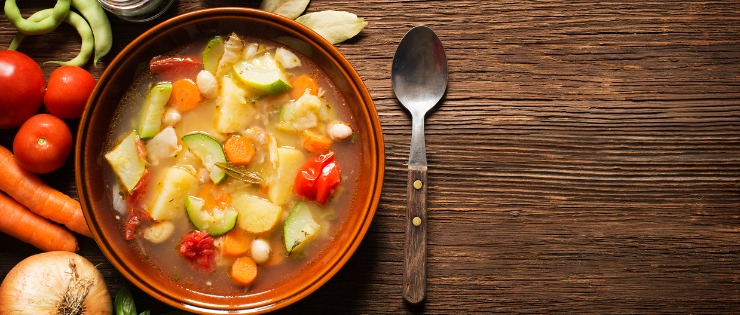
#9 Pulled Meat Rolls
Who doesn’t love a pulled beef or pork roll topped with salad or coleslaw? There is little preparation, and you can do it well in advance. Use a slow cooker or oven to cook the meat on Sunday night and you’ll have lunch sorted for most of the week.
You can buy packaged, marinated meats at the supermarket or find a recipe and make your own. If you’re short on time, you can buy an already prepared coleslaw or chop up your own and store it dry in the fridge. Take out a daily portion of the cabbage mix and stir through the coleslaw dressing so it stays fresh.
If you prefer, top the meat with salad leaves and cubed tomato. A lunchbox with a few compartments allows you to transport the ingredients to work separated and make it up at lunchtime. Pulled meat tastes great served in a French stick or choose a lunch roll if you prefer wholemeal or multigrain options.
#10 Pizza
If you can’t go past a slice of pizza for lunch, make your own rather than buying it. The pizza dough is quick and easy to prepare in a Thermomix or bread maker, but if you’re short on time, buy the bases at the supermarket.
Top your pizza with plenty of chopped vegetables, keep the deli meats to a minimum and top with low fat cheese. Think about some gourmet pizzas you’ve eaten out for inspiration of different toppings you can try. A Tandoori chicken, Mediterranean lamb, seafood, vegetarian and beef pizzas will keep it interesting. Cook your pizza at home the night before and store in the fridge until you’re ready to serve. You could even make up several pizzas and freeze to save time and money.
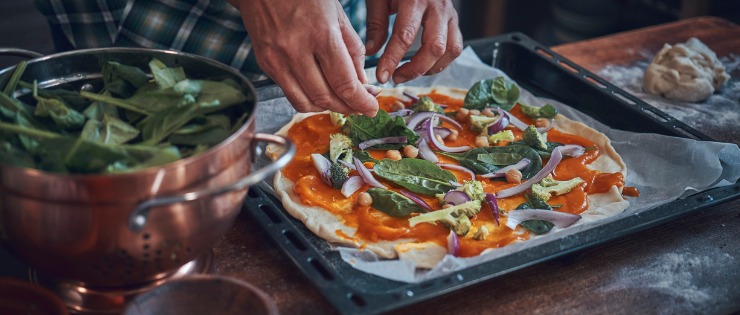
You also won’t need to worry about keeping your meat pizza safe to eat during transport if it’s defrosting but if you take it out of the fridge, place it in a bag with a cold pack.
#11 Focaccias
Another excellent option for freezing ahead is focaccias. For those who aren’t a fan of freezing sandwiches, a focaccia can be toasted after defrosting, so you can’t tell it has been frozen.
Just like pizzas, you can keep it interesting by using a wide variety of fillings. Make a note on the alfoil which flavour each portion is before freezing then pull out your preferred one in the morning. Include roasted vegetables and baby spinach leaves for a lunchtime serve of vegetables.
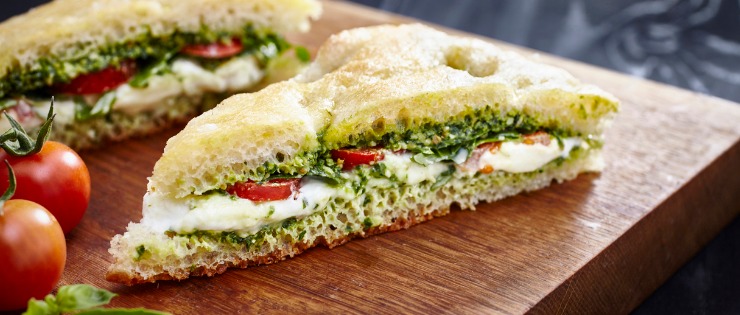
#12 Curries
You can’t beat a curry for the perfect make ahead meal. The flavours often develop further overnight for a tasty lunch option. Store with rice as individual serves, so you don’t need to do anything in the morning. Try a vegetarian or lean meat curry for a healthy option. Evaporated milk can also be a light option.
If you’re making a coconut milk or coconut cream curry, store it in the fridge rather than the freezer. Curries and rice will keep fine for a few days stored in the fridge. Be careful with rice, though. If it has been left out at room temperature for two or more hours, you should throw it away.
With a little thought and effort, you can transform your boring sandwiches or junk food takeaways into nutritious meals that are light on your hips (and pocket).